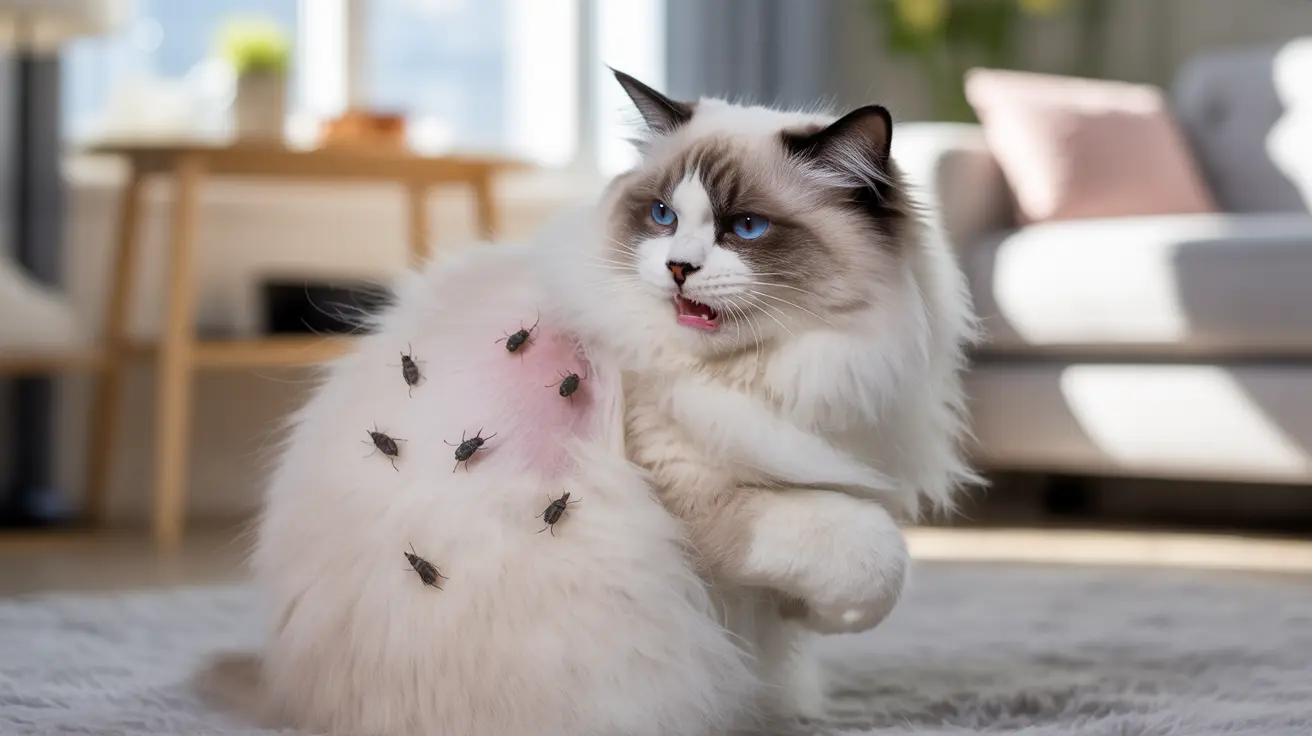When it comes to parasitic concerns for our feline friends, bird mites can pose an unexpected challenge. While these tiny parasites primarily target birds, they can temporarily affect cats, causing discomfort and skin irritation. Understanding how to identify, treat, and prevent bird mite exposure is crucial for maintaining your cat's health and comfort.
In this comprehensive guide, we'll explore everything cat owners need to know about bird mites, including their impact on cats, effective treatment options, and essential prevention strategies.
Understanding Bird Mites and Their Impact on Cats
Bird mites are microscopic parasites that typically feed on birds' blood. While they cannot establish permanent populations on cats, these opportunistic parasites may attempt to feed on cats when their preferred avian hosts are unavailable. Adult mites measure approximately 1/32 inch in length and can appear as tiny moving dots that are white, gray, or reddish when filled with blood.
Although cats aren't suitable long-term hosts for bird mites, exposure can result in significant discomfort and skin issues that require prompt attention.
Recognizing Bird Mite Symptoms in Cats
Cats affected by bird mites typically display several distinctive symptoms:
- Excessive scratching and grooming
- Small red bumps or welts on the skin
- Visible skin irritation and inflammation
- Restlessness, especially during night hours
- Changes in behavior due to discomfort
Effective Treatment Approaches
Treatment for bird mites on cats requires a multi-faceted approach:
Veterinary Care
Always consult a veterinarian for proper diagnosis and treatment. They may prescribe:
- Anti-parasitic medications
- Medicated shampoos
- Anti-inflammatory treatments
- Specific treatments for secondary skin infections if present
Environmental Management
Addressing the environment is crucial for effective treatment:
- Remove nearby bird nests
- Thoroughly clean and vacuum living spaces
- Wash bedding in hot water
- Seal entry points where birds might nest
Prevention Strategies
Preventing bird mite infestations involves several key steps:
- Regular inspection of outdoor areas for bird nests
- Maintaining clean living spaces
- Limiting cat access to areas where birds commonly nest
- Using veterinarian-approved preventive treatments
Frequently Asked Questions
How can I tell if my cat has been bitten by bird mites?
Look for signs of excessive scratching, small red bumps on the skin, and unusual restlessness. You might notice your cat grooming more frequently or becoming irritated, especially at night when mites are most active.
Can bird mites live on cats and cause long-term infestations?
No, bird mites cannot establish permanent populations on cats. While they may bite cats and cause temporary discomfort, they cannot complete their life cycle without an avian host.
What treatments are safe and effective for bird mite bites on cats?
Safe treatments include veterinarian-prescribed anti-parasitic medications, medicated shampoos, and environmental cleaning. Never use over-the-counter treatments without consulting your vet first.
How do I eliminate bird mites from my cat's environment to prevent reinfestation?
Remove all bird nests from your property, thoroughly clean your home, wash all bedding in hot water, and vacuum extensively. Consider professional pest control if the problem persists.
Are there signs that my cat may have an allergic reaction to bird mite bites?
Yes, signs of an allergic reaction may include severe itching, swelling around bite areas, excessive grooming, and skin redness. If you notice these symptoms, seek immediate veterinary care.
Conclusion
While bird mites on cats can cause significant discomfort, understanding the proper identification, treatment, and prevention methods can help protect your feline companion. Always work with your veterinarian to develop an appropriate treatment plan, and focus on environmental management to prevent future infestations.






